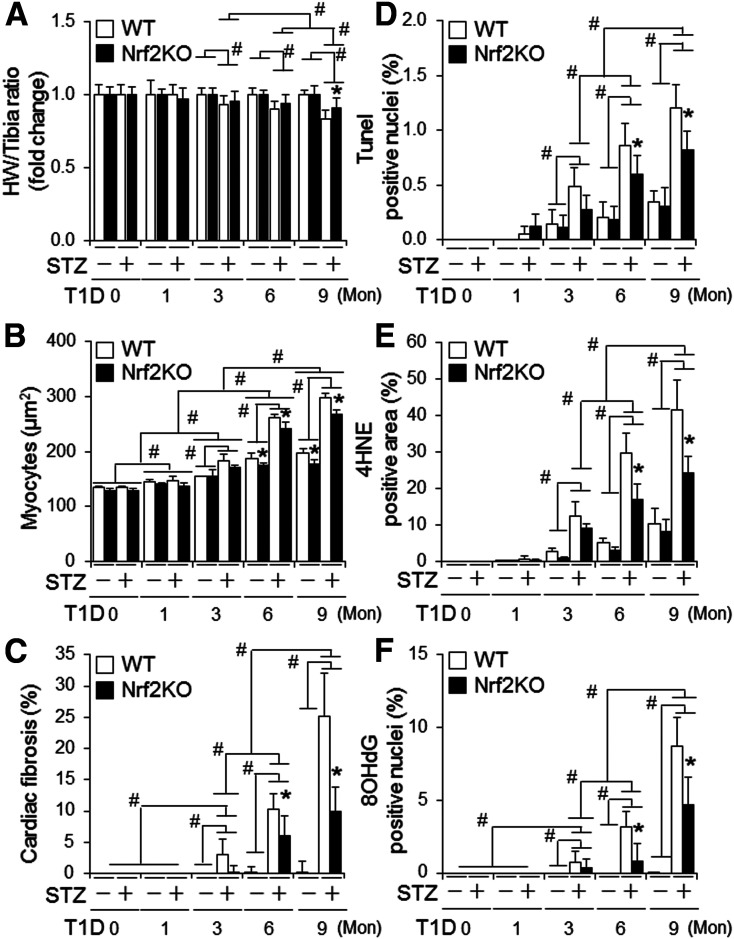Figure 2.
The impact of global KO of Nrf2 on cardiac remodeling, apoptosis, and oxidative stress in mice with STZ-induced diabetes. T1D in littermates of adult male WT and Nrf2KO mice on a C57BL/6J genetic background was induced by i.p. injection of STZ for 9 months (Mon) as described in research design and methods. A: Heart weight (HW)–to–tibia length ratio in fold changes. The values of vehicle-treated groups are set as onefold. #P < 0.05 between indicated groups; *P < 0.05 vs. WT STZ group at 9 months. Animal numbers for each group are indicated in Supplementary Fig. 1A. B: Cardiomyocyte sizes. C: Cardiac fibrosis (%). D: Cardiac apoptosis. E and F: Cardiac oxidative stress assessed by quantifying the percentage of 4HNE-positive areas and 8OHdG-positive stained nuclei, respectively. LV tissue sections of the WT and Nrf2KO mice were used for the assessments from B to F. B–F: Animal numbers for each group are 3–5. B–F: #P < 0.05 between indicated groups. *P < 0.05 vs. WT STZ groups at the same end points.

